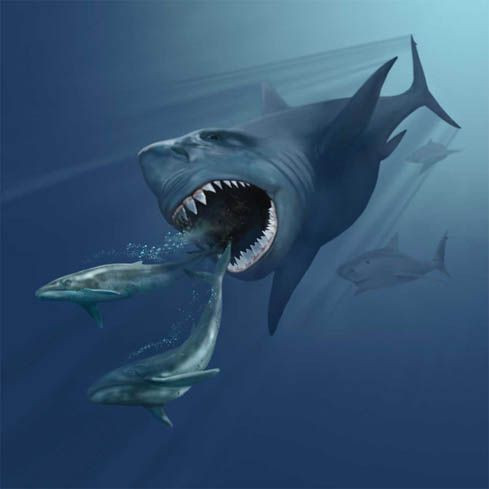Megalodons Grew Larger In Cooler Waters Than In Warmer Regions: Study
KEY POINTS
- Researchers found that all previously identified megalodon nurseries were in warm waters
- It's possible that megalodons in warmer waters were smaller, as per Bergmann's rule
- The gigantic size pattern may be applicable only to the ones in cooler waters: Researchers
What is it that made the extinct megalodons so large? The colder waters may have something to do with it, as the creatures in cooler waters were larger than the ones in warmer waters, a new study has found.
The Odontus megalodon is often portrayed in pop culture as gigantic sharks. It is believed that they may have reached a total length of 18 to 20 meters, noted the authors of a new study, which was published in Historical Biology. However, the species is actually only known from its teeth.
For their work, the researchers "re-examined the previously proposed body size trends" of the megalodon. In the past, certain megalodon sites were determined as nursery areas for the species because their teeth found in the areas were smaller in size compared to the ones in other megalodon sites, Taylor & Francis noted in a news release. However, the researchers found that these nursery areas were actually close to the equator, with "almost all" of them actually being in "warmer regions or time frames."
This suggests megalodons were larger in the cooler waters than in warmer regions. This size pattern is attributable to Bergmann's rule. Under this principle, animals in colder regions tend to be bulkier than those in warmer areas. The generalization suggests that larger animals have more advantage in cooler climates because they can retain heat more efficiently, the researchers noted.
However, that doesn't mean megalodons didn't really use nurseries.
"While it is still possible that neonatal O. megalodon could have utilized nursery areas, the previously identified paleo-nursery areas based on body size may reflect temperature-dependent trends rather than the inferred reproductive strategy," the researchers wrote. "Thus, the gigantism of O. megalodon in cooler waters was possibly further enhanced by its cooler environment."
According to the researchers, the findings suggest that not all megalodons grew equally large. Instead, the idea that they grew to 18-20 meters may be actually applied mainly to the ones in colder environments.
"(T)he results of this study have important implications for understanding how modern climate change is rapidly accelerating marine habitat shifts to more polar latitudes in apex predators such as sharks," said study co-author Michael Griffiths of William Patterson University.

© Copyright IBTimes 2025. All rights reserved.






















